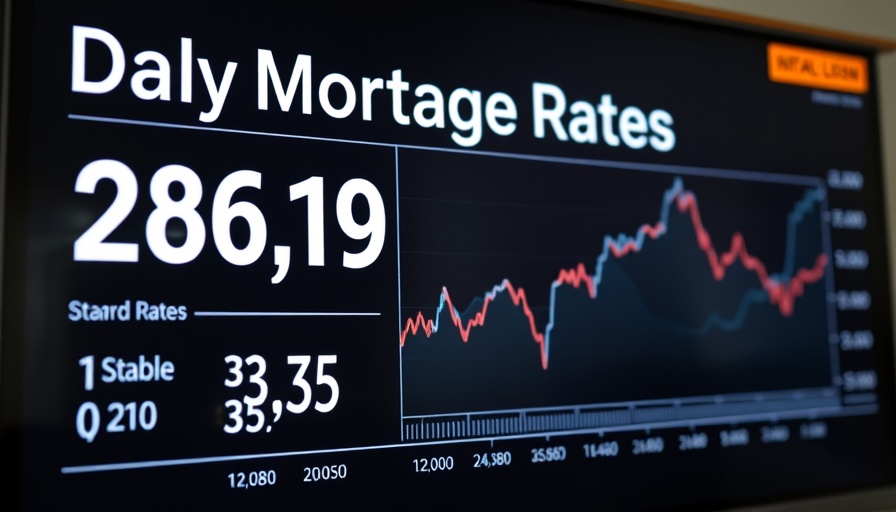
Understanding the Stability of Mortgage Rates Amid Economic Shifts
The recent Consumer Price Index (CPI) report has paused the rollercoaster of mortgage rates, a welcome respite for homebuyers and stakeholders in the real estate sector. While pundits might link mortgage rates directly to changes in the Fed Funds Rate, it’s important to note that they are predominantly driven by long-term bond yields sensitive to key economic data, particularly inflation.
The Interplay Between Inflation Reports and Mortgage Rates
As reported, the CPI data revealed a mixed economic landscape, showcasing elements that point towards both rising costs (notably in the services sector and influenced by tariffs) and declining expenses in major areas like housing. Such fluctuations have significant implications for the Federal Reserve's next moves on interest rates. As inflation shows signs of stabilization, the probability of a rate cut in September has increased, which may offer a boost to short-term bonds, enhancing prospective home loan conditions.
What the Current Data Indicates for Future Rate Movements
Looking ahead, it appears the immediate mortgage rate stability can be attributed to longer-term bonds remaining unchanged despite some improvements in shorter-term yields. Investors and homebuyers alike should watch for additional economic reports that influence Fed policy, understanding that these will ultimately dictate future mortgage rate shifts.
Implications for Homebuyers and Investors
For potential homebuyers and investors, the current environment points toward a careful balancing act involving caution and opportunity. With mortgage rates stabilizing at around 6.58% for 30-year fixed loans, insight into the inflation trajectory can help inform smarter decision-making. The mixed CPI report suggests now might not be the time to rush into buying or refinancing; rather, a strategic wait-and-see approach could be beneficial.
The Outlook for Housing Affordability
As market conditions continue to evolve, affordability will remain a significant concern. Measures to contain inflation will impact wage growth and, subsequently, purchasing power. The importance of keeping a close eye on these indicators cannot be overstated, as they play a critical role in determining the best timing for entering the housing market.
Conclusion: Strategic Decision-Making in a Fluid Market
Given the current market dynamics, it is essential for consumers and investors to remain educated and adaptable to changes in financial conditions. Understanding the implications of economic reports can lead to more informed decisions related to mortgage financing and real estate investments.
As the landscape of mortgage rates evolves, being proactive, informed, and prepared can help you navigate upcoming market challenges.
 Add Row
Add Row  Add
Add 




Write A Comment